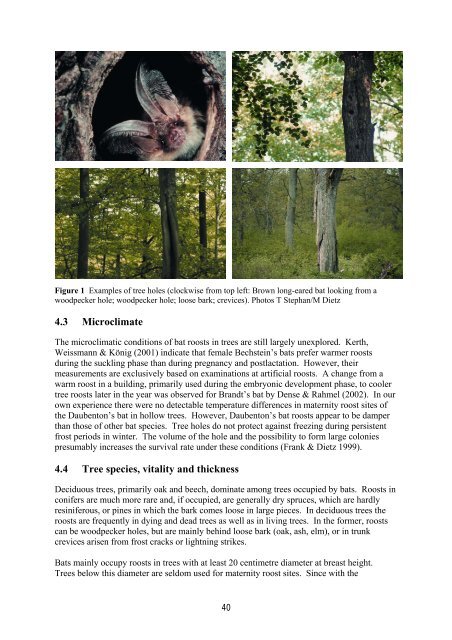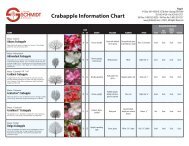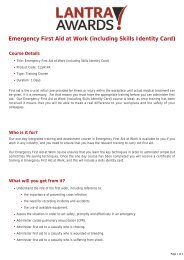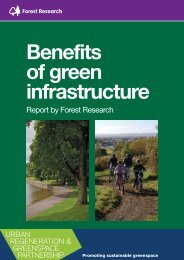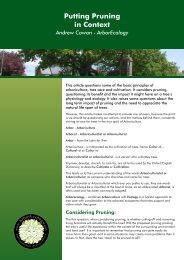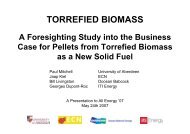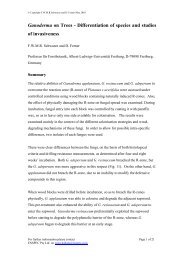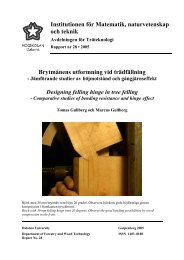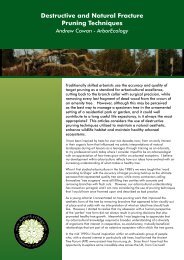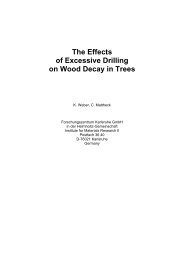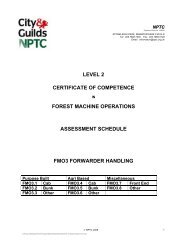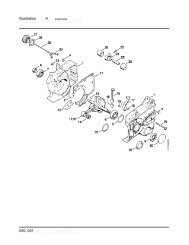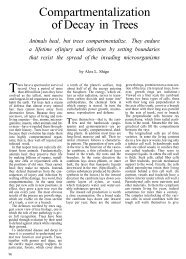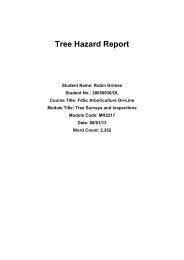working today for nature tomorrow - Justus-Liebig-Universität GieÃen
working today for nature tomorrow - Justus-Liebig-Universität GieÃen
working today for nature tomorrow - Justus-Liebig-Universität GieÃen
- No tags were found...
Create successful ePaper yourself
Turn your PDF publications into a flip-book with our unique Google optimized e-Paper software.
Figure 1 Examples of tree holes (clockwise from top left: Brown long-eared bat looking from awoodpecker hole; woodpecker hole; loose bark; crevices). Photos T Stephan/M Dietz4.3 MicroclimateThe microclimatic conditions of bat roosts in trees are still largely unexplored. Kerth,Weissmann & König (2001) indicate that female Bechstein’s bats prefer warmer roostsduring the suckling phase than during pregnancy and postlactation. However, theirmeasurements are exclusively based on examinations at artificial roosts. A change from awarm roost in a building, primarily used during the embryonic development phase, to coolertree roosts later in the year was observed <strong>for</strong> Brandt’s bat by Dense & Rahmel (2002). In ourown experience there were no detectable temperature differences in maternity roost sites ofthe Daubenton’s bat in hollow trees. However, Daubenton’s bat roosts appear to be damperthan those of other bat species. Tree holes do not protect against freezing during persistentfrost periods in winter. The volume of the hole and the possibility to <strong>for</strong>m large coloniespresumably increases the survival rate under these conditions (Frank & Dietz 1999).4.4 Tree species, vitality and thicknessDeciduous trees, primarily oak and beech, dominate among trees occupied by bats. Roosts inconifers are much more rare and, if occupied, are generally dry spruces, which are hardlyresiniferous, or pines in which the bark comes loose in large pieces. In deciduous trees theroosts are frequently in dying and dead trees as well as in living trees. In the <strong>for</strong>mer, roostscan be woodpecker holes, but are mainly behind loose bark (oak, ash, elm), or in trunkcrevices arisen from frost cracks or lightning strikes.Bats mainly occupy roosts in trees with at least 20 centimetre diameter at breast height.Trees below this diameter are seldom used <strong>for</strong> maternity roost sites. Since with the40


